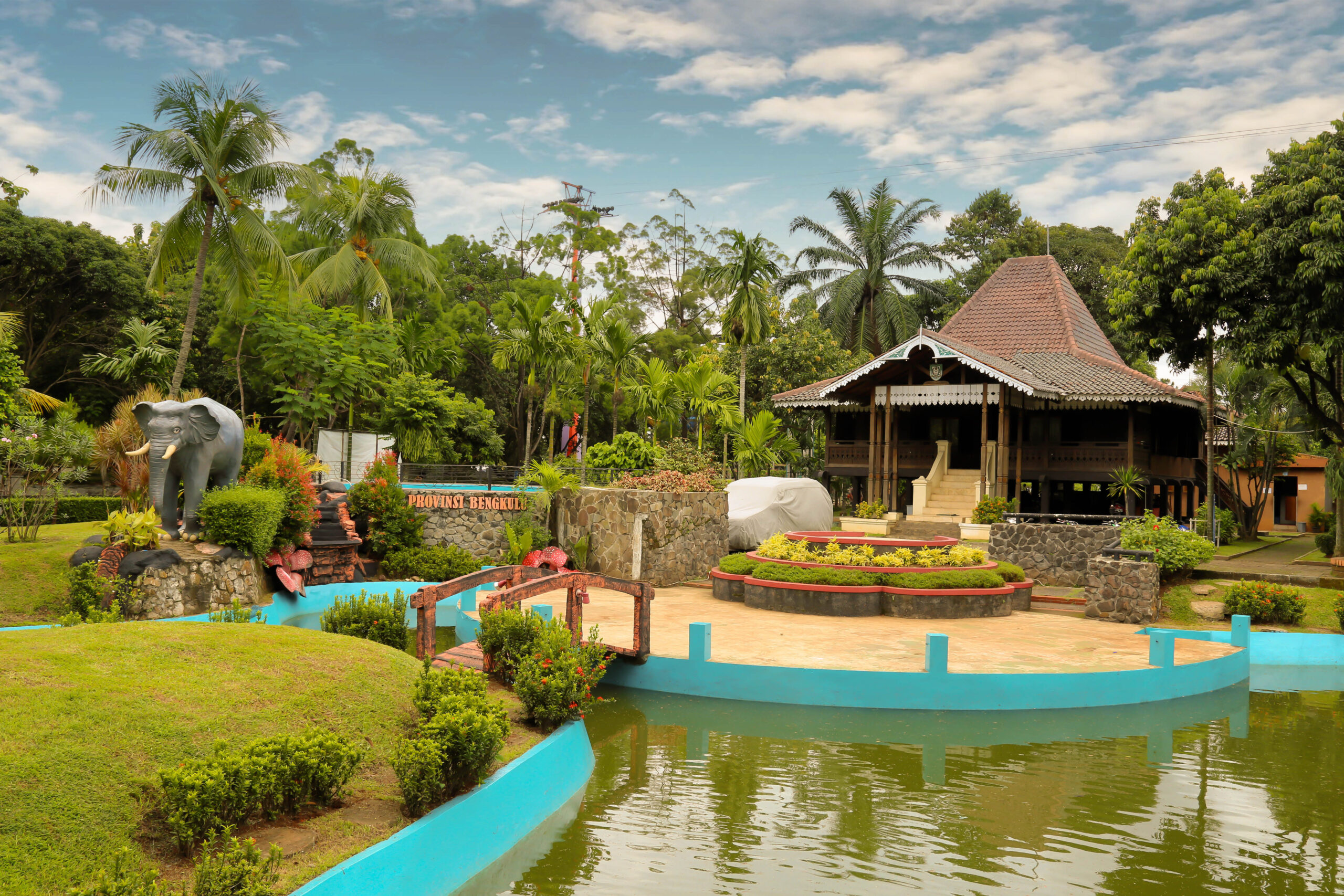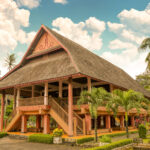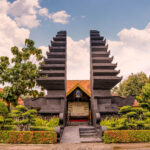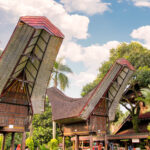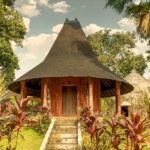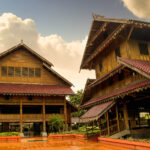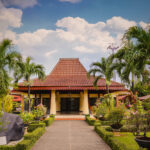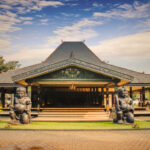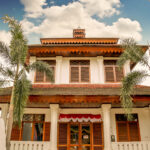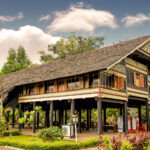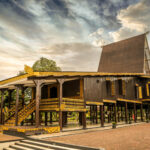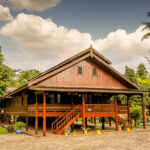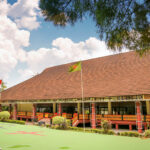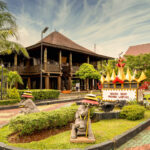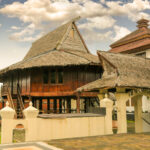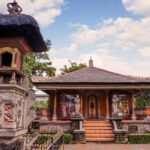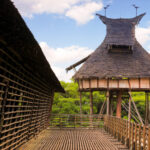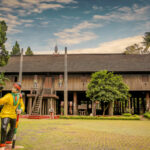Selamat datang di Bengkulu!
Bengkulu, the sparkling gem on the edge of the Indian Ocean, is renowned for its beautiful tourist destinations. The grand and historically intriguing Fort Marlborough stands as a silent witness to the English glory of three centuries ago, while Panjang Beach embraces visitors in the warmth of the ocean waves. Bengkulu is also known for its past, reflected through the Parr Monument, the residence of Bung Karno from 1938 to 1942, and the Jamik Mosque that he designed.
Moreover, history has etched the Princess of Bengkulu as a national hero—Mother Fatmawati, the seamstress of the Red and White flag, and the wife of the proclaimer Bung Karno. The Fatmawati Monument stands proudly in the heart of Bengkulu City, officially inaugurated by the President of Indonesia, Joko Widodo, on February 5, 2020.
The beauty of Bengkulu is also conveyed through the charming allure of its traditional houses. At TMII, the Bengkulu Pavilion will immerse you in the life of Bengkulu’s community with four enchanting traditional houses. Their uniqueness lies in the sturdy structures elevated on stilts.
Among them is a noble house called Gedang or Depati. This aristocratic building is adorned with larger carvings compared to ordinary houses on the front and sides. Its interior is equally enchanting, showcasing traditional bridal chambers from various regencies and cities, along with the diverse cultural riches of Bengkulu.
The adjacent common house, though simple, is laden with meaning. Its interior depicts the daily life of the Bengkulu community, with a porch, central space, parents’ bedroom, and a bedroom for children. As the majority of its people are Muslims, there is also an area for worship.
The last traditional house serves as a venue for traditional and religious ceremonies, such as weddings, baby hair-cutting ceremonies, and various religious rituals. Moreover, there are traditional musical instruments such as gongs, rebab, kerilu, and gendang from Rejang Lebong, as well as the unique music instrument dhol that is still played to this day.
Not to be overlooked, the Rafflesia Arnoldi flower statue, one of the world’s largest flowers with a diameter of up to one meter, known for its unpleasant odor, can also be found at the Bengkulu Pavilion.
DID YOU KNOW?
Bengkulu’s traces extend beyond Indonesia to neighboring countries. In Singapore, there is a street named Bencoolen Street, marking the end of the British colonial era in Indonesia.

